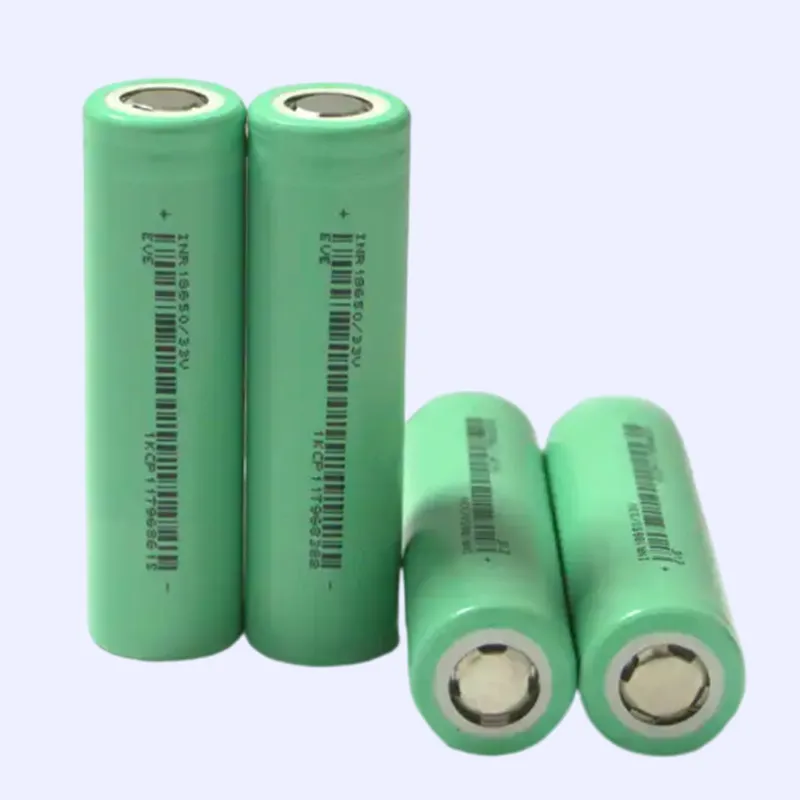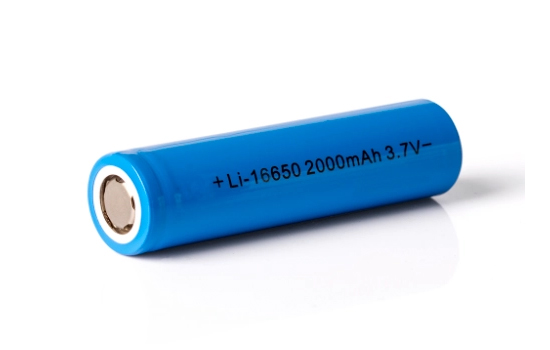18650 and 16650 batteries are two of the most widely used rechargeable batteries on the market today. Their unique characteristics, advantages, and applications make each suitable for different uses. In this article, we will explore the key differences between these two battery types to help you decide which one is best for your needs.
Part 1: What is an 18650 Battery?

An 18650 battery is a lithium-ion rechargeable battery that measures 18mm in diameter and 65mm in length. Known for its high energy density and long lifespan, this battery is commonly used in a variety of devices, including laptops, flashlights, and electric vehicles.
Key Specifications of 18650 Batteries
- Size: 18 mm x 65 mm
- Capacity: Typically ranges between 1800mAh and 3500mAh
- Voltage: Nominal voltage of 3.7V, with a full charge voltage of 4.2V
- Discharge Rate: Varies; high-discharge models can handle currents up to 30A
Common Applications
- Laptops: The high capacity and reliable discharge rate of 18650 batteries make them ideal for laptops, providing long-lasting power for mobile computing.
- Power Tools: These batteries supply the necessary energy for power tools, effectively supporting high-demand tasks.
- Electric Vehicles: Often used in electric vehicles due to their ability to handle high discharge rates and long cycle lives, extending the driving range on a single charge.
- Flashlights: High-performance flashlights commonly rely on 18650 batteries to deliver consistent and bright illumination, crucial for both everyday use and emergency situations.
Part 2: What is a 16650 Battery?

A 16650 battery is slightly smaller than an 18650, measuring 16mm in diameter and 65mm in length. Despite its reduced size, it still offers reliable performance and is often used in devices where space is limited, such as LED flashlights and electric toothbrushes.
Key Specifications of 16650 Batteries
- Size: 16 mm x 65 mm
- Capacity: Typically ranges from 1800mAh to 2500mAh
- Voltage: Nominal voltage of 3.7V, with a full charge voltage of 4.2V
- Discharge Rate: Generally lower than 18650, typically around 5A maximum
Common Applications
- LED Flashlights: The compact size and reliable capacity of the 16650 make it well-suited for LED flashlights, ensuring consistent and bright illumination.
- Electric Toothbrushes: 16650 batteries provide sufficient power for effective cleaning while fitting perfectly into the design of electric toothbrushes.
- Speakers: The size and performance balance of the 16650 ensures good sound quality and portability in portable speakers.
Part 3: 18650 vs 16650 Batteries
When choosing between 18650 and 16650 batteries, it’s important to consider their differences to determine which one best suits your device’s needs. Here’s a detailed comparison of the two battery types.
1. Capacity Comparison
The 18650 battery has a clear advantage in terms of energy storage. With a capacity typically ranging from 1800mAh to 3500mAh, it can store more energy and power high-drain devices. On the other hand, the 16650 battery has a capacity ranging from 1800mAh to 2500mAh, which, while slightly lower, is still sufficient for powering smaller devices.
2. Size and Suitability
Size plays a crucial role when selecting a battery. The 18650, with its 18mm diameter and 65mm length, is better suited for larger devices, such as laptops and electric vehicles. The 16650, with its smaller 16mm diameter and the same 65mm length, is ideal for devices where space is limited, such as LED flashlights and electric toothbrushes.
3. Discharge Rate
The discharge rate refers to how quickly the battery can release its power. The 18650 is capable of supporting higher discharge rates, with high-discharge models reaching up to 30A, making it suitable for power tools and high-performance devices. The 16650 battery has a lower discharge rate, typically around 5A, which is sufficient for low-power devices like flashlights and portable speakers.
4. Safety Features
Both 18650 and 16650 batteries can come with built-in protection circuits to prevent overcharging, overheating, and other safety issues. This makes both types safe for use in everyday devices, ensuring reliable and secure performance.
In conclusion, the choice between 18650 and 16650 batteries largely depends on the specific requirements of your device. If you need a battery with higher capacity and discharge rates for demanding applications, the 18650 battery is the better choice. However, for smaller devices that require a more compact battery, the 16650 is a great option. For more details on battery applications, you can refer to Types of 18650 Batteries Explained for Optimal Use.
18650 versus 16650 Batteries: A Comprehensive Comparison
When choosing between 18650 and 16650 Li-ion batteries, it’s important to understand their key differences to select the right battery for your device. Here’s a detailed comparison of both batteries to help you make an informed choice.
1. Size Comparison
The most obvious difference between 18650 and 16650 batteries is their size. The 18650 battery is larger, typically measuring 65 mm in length and 18 mm in diameter. On the other hand, the 16650 battery is slightly smaller, measuring 65 mm in length and 16 mm in diameter. This size difference affects device compatibility.
- 18650 Battery: 65 mm (Length) x 18 mm (Diameter)
- 16650 Battery: 65 mm (Length) x 16 mm (Diameter)
2. Capacity
The capacity of a battery determines how much energy it can store, which affects how long it can power a device. 18650 batteries generally offer higher capacities than 16650 batteries. With capacities ranging from 2000mAh to 3500mAh, the 18650 is ideal for high-drain devices like laptops and power tools. The 16650 typically ranges from 1300mAh to 2500mAh, making it more suitable for devices requiring less power, such as flashlights or portable speakers.
3. Voltage
Both 18650 and 16650 batteries are designed to operate at similar voltages, typically between 3.6V and 3.7V. However, due to its larger capacity, the 18650 battery can provide a more sustained voltage over a longer period, making it more appropriate for high-power applications.
4. Safety Features
Li-ion batteries, including both 18650 and 16650, often come with built-in protection circuits to prevent overcharging, over-discharging, and short circuits. These safety features help ensure the battery can be safely used in various devices, especially those with high power demands. Always check for the presence of safety features, particularly when using the batteries in high-drain devices.
5. Cost and Availability
18650 batteries are more readily available and come in a wider range of options in terms of capacity and discharge rates, making it easier to find one that suits your needs. However, 16650 batteries are less common and may be slightly more expensive due to their specialized use. However, it is still available from various suppliers.
6. Weight
Weight is an important factor for portable devices, and 18650 batteries tend to be heavier due to their larger size and higher capacity. The added weight contributes to the stability of heavier devices like power tools. 16650 batteries are lighter, making them ideal for portable devices like flashlights and small electronics where minimizing weight is important.
7. Applications
The different capacities and sizes of the two batteries lead to different applications. The 18650 is commonly used in high-power applications such as laptops, electric vehicles, and power tools. In contrast, 16650 batteries are frequently used in compact devices like LED flashlights, electric toothbrushes, and portable speakers. Understanding your device’s requirements will help you make the right choice.
8. Environmental Impact
As Li-ion batteries, both 18650 and 16650 have similar environmental impacts. Proper disposal and recycling of both types of batteries is crucial for reducing environmental harm. Many local recycling programs accept these batteries, ensuring they are handled in a safe and sustainable manner. Recycling helps recover valuable materials and reduces waste.










